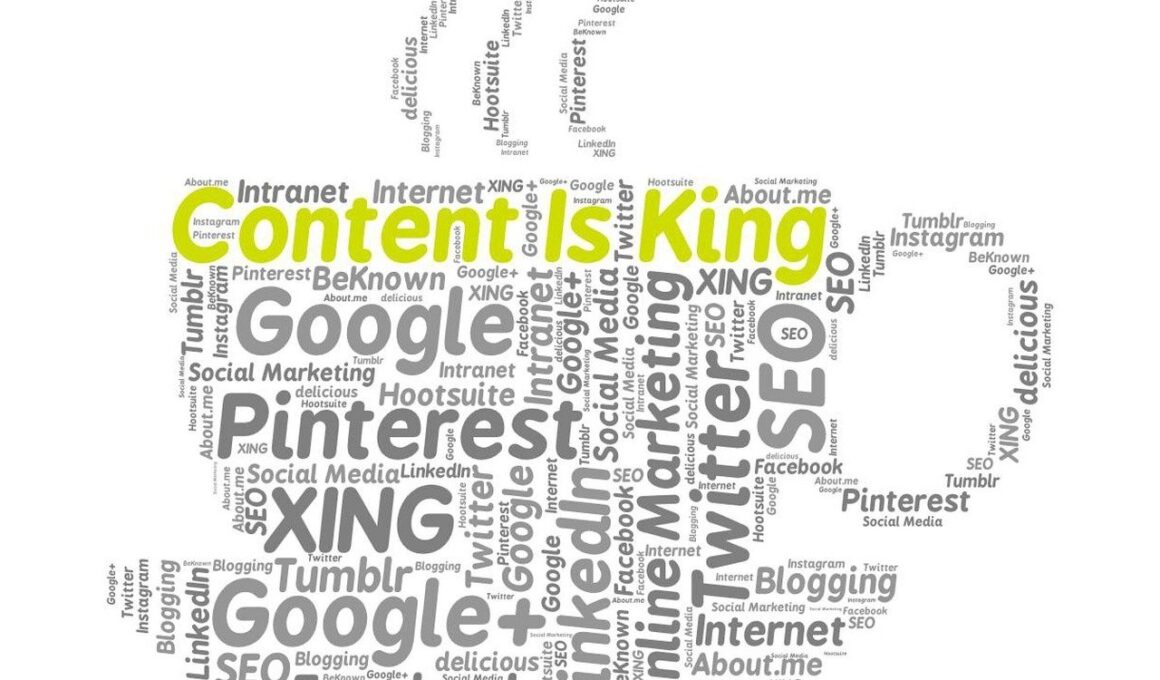How to Use Content Marketing to Retain Customers
Content marketing plays a crucial role in customer retention for businesses seeking to build loyalty and trust. By providing valuable information, your brand positions itself as a thought leader in the industry. Focus on creating quality content that addresses customer pain points and needs. This could take the form of blog posts, informative articles, or how-to videos. Understand your audience deeply, as this will help you create compelling content tailored to their preferences and queries. When customers see that your brand genuinely understands their challenges, they are more likely to stay loyal. Engage with your audience through social media, and ask for their feedback regularly. Additionally, create a content calendar to ensure consistent, relevant posts that keep customers engaged with your brand. Highlight customer stories and testimonials within your content to showcase your product’s effectiveness. Sharing your customers’ success stories not only serves as social proof but also solidifies your relationship with existing customers. Ultimately, the goal is to foster a community around your brand, where customers feel valued and understood, leading to higher retention rates.
Next, ensure that your content is accessible and shareable, as this can directly impact customer retention. Utilize diverse formats like articles, videos, podcasts, and infographics to cater to varying preferences. By producing content in multiple formats, you can reach a broader audience and engage them in ways they enjoy most. Moreover, optimizing your content for search engines can help attract organic traffic. Use SEO best practices, such as keyword research, optimizing meta descriptions, and incorporating internal linking, which increases visibility on platforms like Google. Additionally, engage with your audience by encouraging comments and interactions on your platforms. Promptly respond to questions or comments, fostering a two-way communication channel helps deepen relationships and makes customers feel appreciated. Highlight content that resonates with your audience, allowing you to refine your future topics. Creating an interactive content experience, such as quizzes or surveys, may enhance customer engagement and provide valuable insights. Utilizing analytics tools will help track user behavior and preferences. Tailoring your content strategy based on these insights makes your approach more effective, ensuring you keep your customers happy and retained.
Building a Content Strategy
Building a strong content marketing strategy is essential for retaining customers effectively. Start by identifying your target audience and understanding their journey. This will allow you to tailor your content at every stage of the customer lifecycle. Develop targeted content that addresses specific challenges faced by your customers. Case studies, tutorials, and informative articles can be powerful tools. Additionally, consider mapping out a content calendar with themes relevant to each month or season. This ensures consistency and alignment with your customers’ interests. Invest in understanding the metrics that reflect the effectiveness of your content. Important metrics include engagement rates, the frequency of shares, and conversion rates. Pay attention to what content resonates most with your audience through analytics tools. Regularly revisiting and refining your strategy based on the metrics will ensure long-term retention. Don’t forget to repurpose high-performing content into various formats to maximize outreach. For example, turn a well-received blog post into a video series or an infographic. By maintaining a flexible content strategy that adapts to feedback, you can create a memorable experience for customers.
The power of storytelling in content marketing should not be underestimated. Sharing your brand’s story connects with customers on an emotional level. Develop narratives that touch upon values, achievements, or even challenges you’ve overcome as a brand. This helps customers to see a more human side of your company and feel more connected to it. For instance, behind-the-scenes content can allow customers to glimpse the effort that goes into product creation and innovation. Highlight any community involvement or initiatives your company is part of, enhancing relatability and trust. Emotionally charged content tends to be more memorable and shareable, which fosters deeper customer relationships. Also, encourage user-generated content where customers can share their own experiences with your products or services. This not only enhances engagement but also creates a sense of community around your brand. By featuring user-generated content on your platforms, you provide authenticity that resonates with future customers. These stories build a bond of trust and loyalty among your existing customer base. Ultimately, emotional connections are crucial in retaining customers within competitive markets.
Content Personalization
Another effective way to retain customers is through personalized content marketing efforts. Personalization enhances the user experience and creates a sense of exclusivity. Use customer data to tailor content recommendations or offers for individual users. Techniques such as segmentation and behavioral targeting can help you send messages that align closely with what customers want. For instance, sending personalized emails with product recommendations based on previous purchases keeps customers engaged. Additionally, using retargeting strategies can also remind customers of your products or services they previously showed interest in. Utilize customer feedback to further inform your personalization efforts; this way, you know precisely what aspects of your content should change. Moreover, customizing content based on customer preferences reflects your commitment to their satisfaction. By making customers feel special and understood, you significantly improve your chances of retaining them. Keep track of their engagement and adjust your strategy as their preferences evolve. In a world overflowing with information, personalized content ensures your message stands out and maintains relevance in customers’ day-to-day lives.
Finally, consider creating loyalty programs that tie in seamlessly with your content marketing strategy. Loyalty programs provide customers with incentives to continue engaging with your brand. Offer rewards or exclusive content to repeat customers to enhance retention. For instance, a customer loyalty program may include access to premium resources or exclusive educational material. Promote these benefits through your content marketing efforts to encourage sign-ups and participation. Use your content channels to communicate program benefits regularly, ensuring customers know these incentives. Following data-driven insights will help inform your content strategy. Adjust your approach based on the performance and patterns you observe within your audience’s behavior. This helps keep your initiatives relevant and appealing. Additionally, integrating gamification elements can make interactions with your loyalty program more enjoyable. Competition, rewards, or simply engaging tasks can create fun experiences that keep customers intrigued. By aligning loyalty programs with your content marketing, you can cultivate a community of satisfied customers. They, in turn, are likely to advocate for your brand, sharing their positive experiences with others. Seamlessly reinforcing value through content contributes significantly to customer retention.
Measuring Success
To effectively retain customers through content marketing, measuring success is vital. Regularly evaluate the performance of your content marketing initiatives. Key performance indicators (KPIs) can include metrics such as customer retention rates, average purchase frequency, and customer lifetime value. Analyze how these metrics evolve concerning your content strategy. Also, consider employing tools for tracking engagement, comments, shares, and likes across platforms. Utilize feedback from customers to gain unique insights into their needs and preferences. Survey customers to gauge their opinions about your content and any improvements they would like to see. Tools such as Google Analytics or social media insights can provide you with comprehensive reports to guide your decisions. Based on this analysis, iterate and refine your content marketing strategy. Use A/B testing to determine which content types resonate most with your audience, helping you focus resources on effective strategies. Continuously adapting your content based on customer feedback and data analysis ensures longevity in retention efforts. This responsibility helps back the data-driven decisions that ultimately improve relationships and bolster customer loyalty over the long term.

